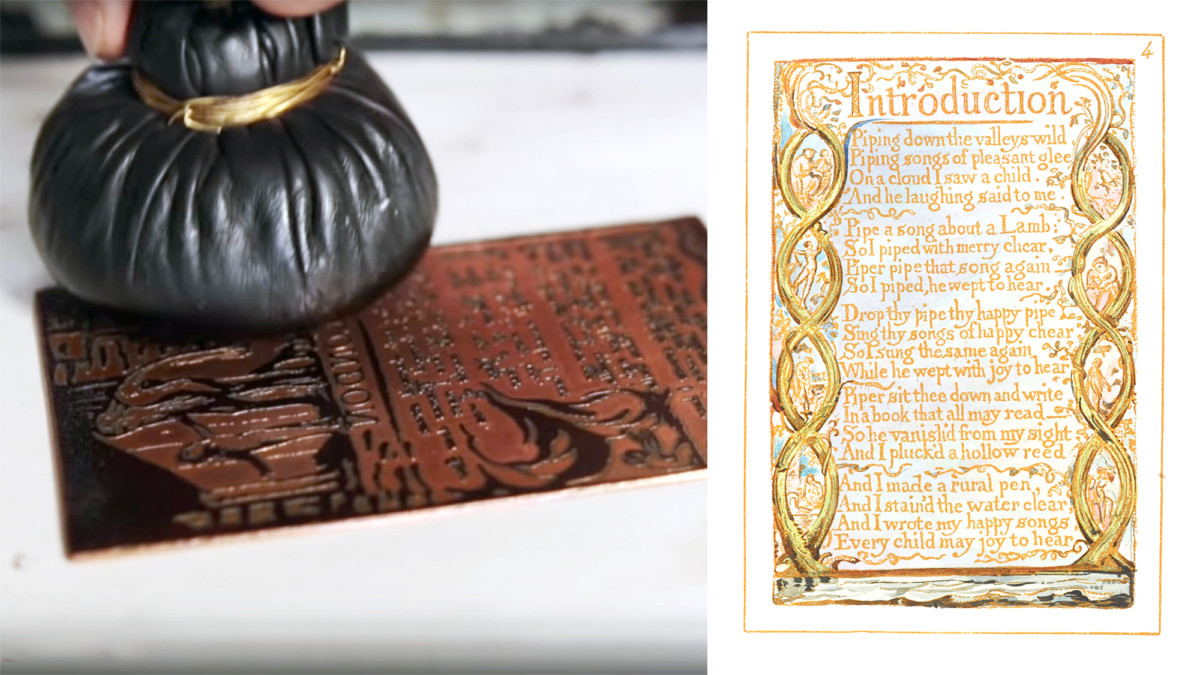William Blake’s Innovative Printing Process
In our age of abundant visuals, it is easy to look at 18th-century Romantic poet William Blake’s illuminated books without realizing just how revolutionary and ingenious they were.
During Blake’s time, books were printed through two processes; one for the text and another to add in the images afterwards. Each process required the use of unwieldy machines operated by teams of printers. For Blake, an engraver and artist by training and poet by passion, this process lacked the control and freedom of form that was necessary to interweave text and image together in the way he truly desired.
Faced with this restriction, Blake displayed some of that originality which was evident in nearly every aspect of his life and came up with the bold idea of a new printing process (later called “relief printing”) which would allow him to print and design text and visuals on the same copper printing plate. While I’ll leave it to the video below to explain and demonstrate the method in all its beauty and intricacy (a definite must watch!), Blake’s innovation essentially allowed him to gain exert minute control over the artistic and printing processes, thereby pushing his art to new heights.
Blake would go on to publish numerous illuminated works; looking at the interplay of text and image in each of them, one gets a newfound appreciation for the creativity and ingenuity of the author who stands behind them. If you ever have the opportunity to check one out, don’t miss the chance!
Please Support us on Patreon!
 The minimum level of contribution is only $1 per month.
The minimum level of contribution is only $1 per month.
Moreover, starting with the pledge level of $3, you will get a digitized vintage book about bookbinding, book history, or book arts each month from us!
These pledges help iBookBinding to continue its work and bring more information about bookbinding and book arts to you!


